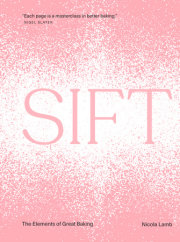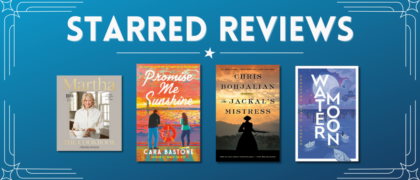WelcomeWelcome to the world of baking, a wonderful place where ingredients transform right before your eyes. It’s a place where lumps of butter and dough become impossibly fragile flaky croissants, where the wobble of a custard tart appears to defy physics and egg whites are whipped into a frenzy of creamy clouds. When you learn to bake, it sometimes feels like you’re becoming a magician. And although it IS magical, it isn’t magic.
And I want to tell you why.
Learning to ask why is one of the most important lessons I have ever learned while baking. Once you start asking this question and pulling at the threads, you’ll discover that baking is an interconnected puzzle, a sprawling family tree of ingredients and reactions. In this book, I hope to provide you with a map so you can explore this kaleidoscopic world with confidence.
I know how frustrating it can be to attempt a recipe off the bat only to be disappointed with the results and not understand why. The reality is, effortless-looking bakes coming out of professional kitchens are often down to one thing, and trust me (because I am speaking from experience), it’s not just natural talent. It comes from years of information gathering and repetition.
Holding a piping bag, judging when the dough is proofed, and defining what “golden brown” really means are no simple feats. In fact, when you are baking at home, it’s near impossible to replicate the rote memory that comes with rolling 10,000 croissants a week or frosting hundreds of cakes. I mean, who has the time (or budget) to take on such a task? It’s obviously not practical. But as a result, it can be harder to feel comfortable and natural in the kitchen when the stakes (The! Dinner! Party! Is! In! Two! Hours! And! My! Ganache! Has! Split!) feel so high.
Part of this is because we set the bar much higher for baked goods. Unlike savory cooking, which seems to be endlessly fixable, once a cake is in the oven, there’s no real way to go back. And what we consider baking “failures”—the burns, the explosions, curdled eggs, the weird textures, the odd colors—always seem more unforgivable and egregious than cooking “failures,” which tend to be considered edible.
Although this high expectation means that a curdled custard may be destined for the trash, while menacingly dry roasted chicken will likely make the cut, it’s for a good reason. At the end of it all, baked goods and desserts have a role in our life that extends far beyond sustenance. Baked goods have an incomparable ability to bring us joy.
In this book, I want to help pave a direct path to that joy. I want to teach you the fundamental principles and techniques that underpin and connect our recipes. Learning to understand the why of baking through the lens of science has helped me feel more confident and independent in the kitchen: imagine a detective’s investigation board with string connecting all the different elements of pastry, showing how choux buns are connected to bagels, how brioche relates to ganache, and what jam and ice cream have in common. I'm no scientist, but I have learned to play by the rules set by each ingredient, which ones play nicely together and which should be kept apart!
I want to share with you the defining factors of successful baking with technique-driven recipes that will show you these skills in action and help to sharpen that baking Spidey sense I know you have. When a recipe asks you to whisk the eggs for 10 minutes or tells you to bake at a sky-high temperature, I want you to know why it’s worth it, and when it’s not. I want this book to make you pick up another baking book with confidence or return to a recipe that previously confounded you. More than anything, I want you to be able to look at any recipe and think, no,
know: “I can make this!”
From the pearls of wisdom handed to me in the early days of my career to all of the knowledge generously shared in the pages of in-depth research by chefs, writers, and scientists, to my own hard-earned lessons along the way, it is my greatest honor to help lay a foundation for you on your baking journey.
This book is divided into two sections. The first is a practical reference guide to the key building blocks of baking. From how to make egg foams to the melting points of fat, my goal is to arm you with the details that underpin successful baking. Yes, there will be graphs.
The second section will lead you through a series of recipes broken down into what I hope is a valuable metric: time. Split into An Afternoon, A Day, and A Weekend (I will never lie to you about how long something takes, that’s a promise!), the recipes will be a practical way for you to see everything described in the reference section in action. From speedy cookies to awe-worthy croissants, each recipe has a timeline, so you’ll be able to transform your kitchen into a patisserie to suit your schedule.
But the first lesson I want to teach you is this: there will be burned crusts, pastry stuck to pans, unset jellies, and everything in between, but try not to let these knock your confidence. Failures are a crucial part of the learning journey. And any journey that ends with cake is one worth taking.
Shall we begin?
Nicola
Copyright © 2024 by Nicola Lamb. All rights reserved. No part of this excerpt may be reproduced or reprinted without permission in writing from the publisher.




